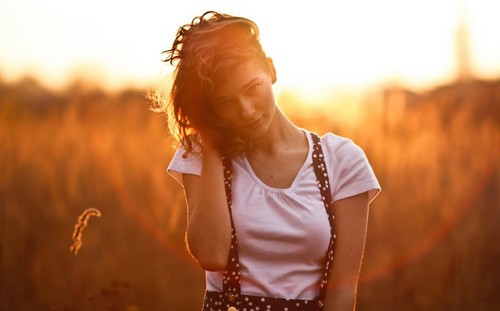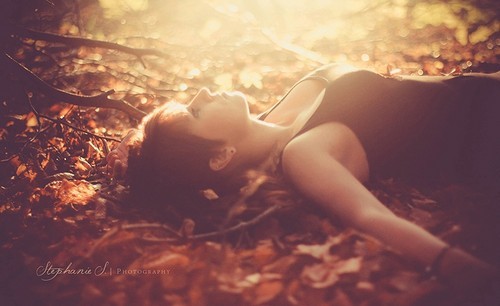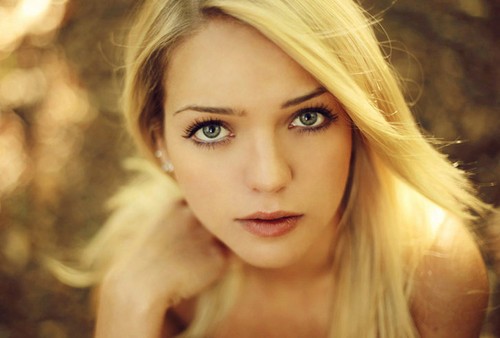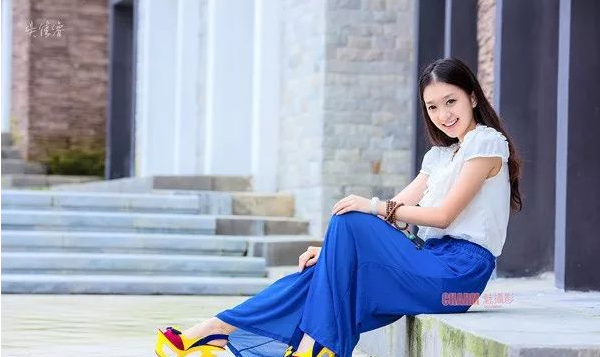The clouds in autumn are full of changes, and the sky is particularly bright. All the vegetation has changed colors, highlighting its unique beauty. This is a very temperamental season. Bring the temperament girl and your camera, let’s create together! Today, I hope to help you with some practical tips for popularizing outdoor portraits.
Table of Contents
Scene Selection
Autumn has strong seasonal characteristics, so when shooting autumn portrait creation outdoors, try to choose scenes that can show seasonal characteristics as much as possible. The first choice is the woods. Whether it is weeds or fallen leaves, they have turned yellow, and it feels like autumn. Or you can choose the open field, with yellow weeds all over the mountains and the sky with few clouds, presenting a unique feeling of depression and loneliness in autumn, which is very charming.
Backlight
Backlit portraits are very commonly used in outdoor photography. Especially in summer, backlighting can highlight the bright and fresh. In the fall, the backlit portraits are equally unforgettable. In the open field, among the dry grass, the girl fluttered her hair casually. Her face is looming in the camera. The taste of wildness and freedom is quietly hidden in this warm time.
Using fallen leaves
We returned to the woods, and the fallen leaves covered the hillsides and paths. Pick up a piece of beauty that is full of gold at will. Such a unique natural element must be used well! Picking it up, sprinkling it gently, and watching the fallen leaves slowly fall in the sky, it’s like experiencing a game of life again. Isn’t it beautiful? Go close to them and enjoy them, then you and nature are like one.
Lying Position
The fallen leaves covered the earth, piece by piece, forming natural lichens. So the lying position is very commonly used in autumn portraits. At this time, man and nature have formed a subtle harmony, which makes people relax both physically and mentally. You may think, it’s great, never so close to nature. In the hearts of the viewers, there is the same resonance. At the same time, different light effects and combinations can be used to form a completely different effect.
Close-up Eyes
If you have a big scene, you need to take some close-up shots at the same time. With a large aperture, the withered grass is no longer clear, and the golden fallen leaves are no longer dazzling. They retreat quietly, forming a complete environment color and continuing to act on the picture effect.
Another important point to pay attention to at this time is the look in your eyes. The look in the eyes in portrait photography is a weapon that directly points to the heart. Especially in a sentimental season like autumn, ask the model to align her eyes with your lens for sure, and see what secrets about autumn are hidden in her heart.
The clever use of light in portrait photography
For some people, taking pictures is a kind of expression of mood and a kind of emotional projection. Some people think that taking pictures is just to record a beautiful picture of life. Some people even believe that the photo must be exposed correctly, the composition must have the golden rule, and the color can be gorgeous, and the resulting image can be brilliant. But after taking portraits, I deeply feel that the atmosphere is the key to the most moving people in the image.
However, how should the atmosphere of the image be created?
Usually special attention is paid to the performance of light and shadow, color tone, “framing” and “emotion of the subject”. Especially the “emotion of the subject” is the most important. Of course, it includes the matching of clothing, makeup, and hairstyle.
“Light and shadow” and “tone” have always been the focus of most of the styles in the image. If you can make good use of the fascinating and rich uncertainty of light, and master the application of changes in warm and cold tones, the basic sense of the atmosphere of the picture will be in your hands.
The light of each day changes with nature and seasons. Good photographers will learn to feel the direction and texture of light and shadow, and make good use of the milder oblique light in the morning and afternoon, or the diffuse light through the clouds and the golden-toned sunset backlight. The light contrast during this period is small, with a warm and uniform tone, which can bring out a very powerful atmosphere of light and shadow.
Clever use of the directionality of light projection
With the projection of light, the shadows of leaves can be as beautiful as oil paintings, and buildings can show their majestic momentum. The three-dimensional and dark side of the scenery can bring you different surprises, and it can also give the image a sense of life and texture.
The contrast of the top light for about two hours before and after noon is too large. The pictures taken are usually without details in the dark parts and dead white in the bright parts. Unless it’s a special subject of calendering, it is usually recommended to avoid such a period.
To shoot a charming white cloud and blue sky background, it is also necessary to pay attention to the directivity of the sunlight. Generally speaking, it is calculated by making a vertical 90 degrees between the sun and the subject. The side where the sun is, usually has a larger contrast, and the model is usually asked to face the sun. And her back is the most beautiful side of the blue sky, and the texture of the background emerges spontaneously.
White balance
Of course, you can also be a little sideways, and the background will be well-lit and even. Another method is to use the camera’s color temperature function to adjust the appropriate color temperature and white balance. Assuming that it is generally sunny, the color temperature can be set at 4700K~5200K. This is probably close to the actual white balance color temperature seen by the naked eye. But such images are more boring and tasteless, so they will be slightly increased to a color temperature setting of about 5500~6000K. This can present a warmer tone. Of course, if you want to express the feeling of cool colors, the color temperature K must be lowered below 4500K.
Learn to observe the temperature of light
Learn to observe the temperature of the light according to your expected shooting style and the light on the spot. The proper adjustment of camera settings is also an advanced knowledge to learn how to feel the ambient light source. Even to the corresponding color temperature and white balance settings for complex light sources such as indoors, night scenes, street scenes, etc., you can calmly respond to changes.
When you can use it freely to create a distinctive tone style, congratulations, your photography skills are already quite good!
When looking at the captured images, you should always ask yourself: “Is this the light you see right now?”
Is it real?
Is this the light tone you want to present?
Even if the photos taken in this way are not post-modified, they are still images with a sense of atmosphere. Try not to rely on automatic white balance as much as possible, just hope that the setting can be accurate at the moment of shooting. Feel the change in color temperature adjustment and let white balance be your helper.
Remember to use your ideas to control the camera, rather than just want to go home and use photo editing software to adjust. I admire the friends who made great photos in the original file. 
Because I think that the things that are photographed should be structured in my mind before I press the shutter. As the captured image gets closer to your preview, you will become more and more harmonious with your camera. This makes it easier to shoot an atmospheric and intoxicating style.
To light and shadow is to “observe” and “feel”.
